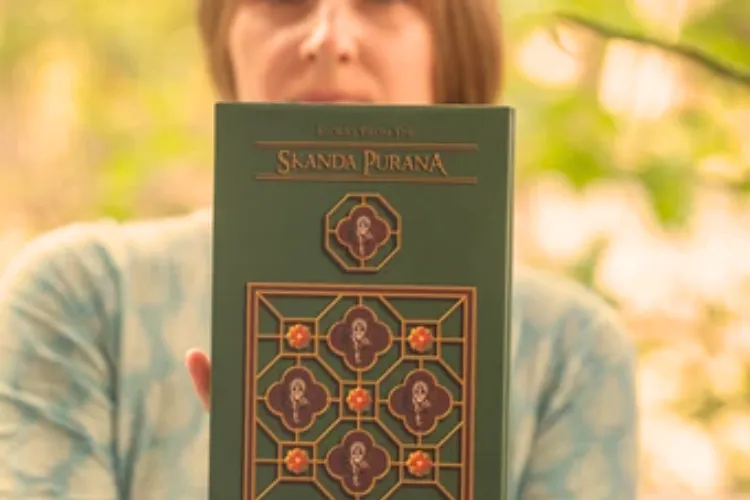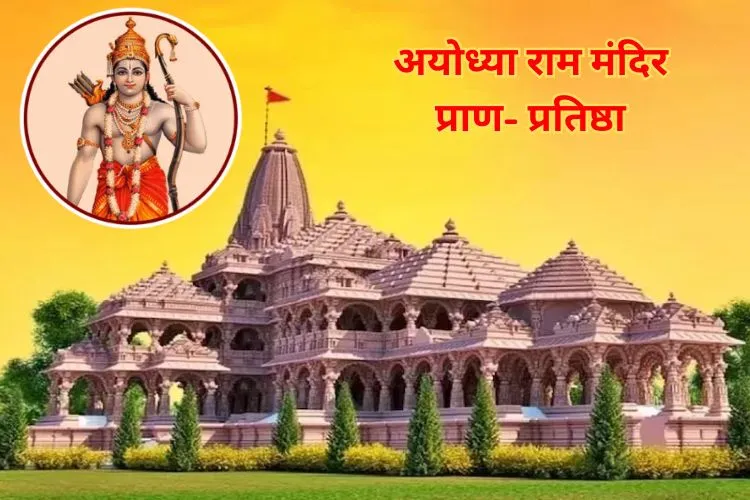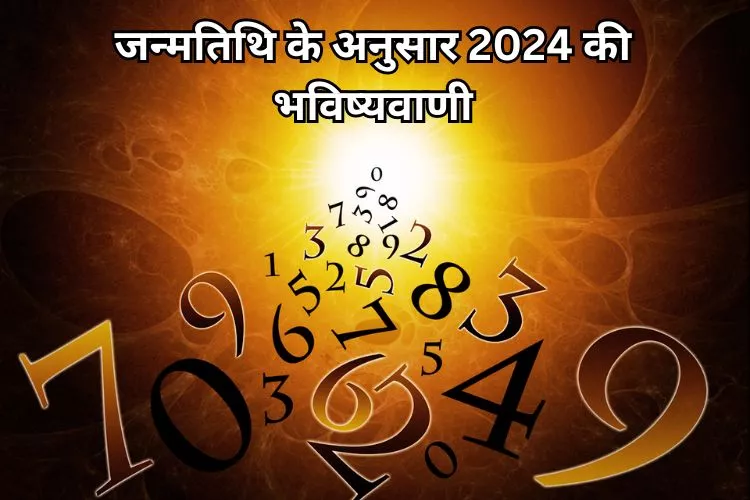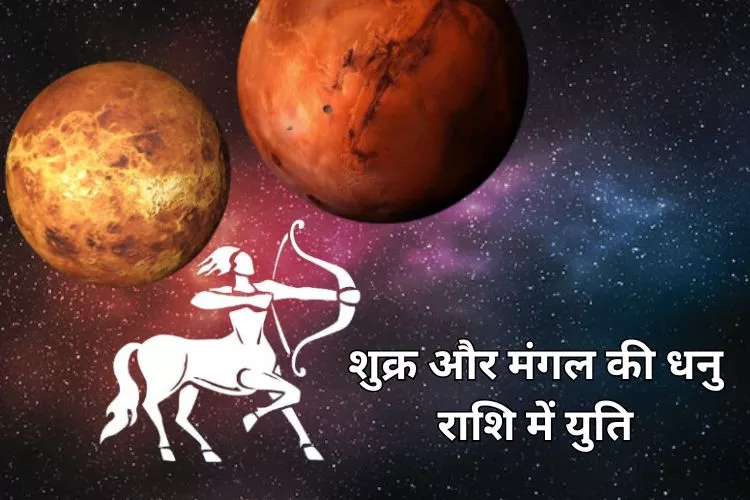Skanda Purana - Unveil Hidden Truths & Its Significance

Table of Content
In the Hindu religion, the spiritual and religious scriptures like Vedas and Puranas hold a significant place. Among the vast array of collections of spiritual texts – Skanda Purana is one of them that has a very important place in Puranas. When it comes to Puranas, there are a total of 18 such different Puranas and Skanda Purana, which is also known as Mahapuran and ranks 13th among the list of Puranas.
About Skanda Purana
When deciphering the name of Skandpuran, it is interesting to know that one of the names of Lord Shiva’s son Kartikeya is also Skanda. And the name Skandapuran has been named after him. Holding the deep essence, this spiritual book also has an account of the glory of Lord Shiva; hence it is also considered to be the text of Shaivism. Not just about Kartikeya, but you will also find the story of destroying Tarakasura in Skanda Purana.
Ancient Fact to Know – Who wrote Skanda Purana?
“Skanda Purana is in the Sanskrit language, and its author is Vedavya.”
Not just limited to Lord Shiva or his son Kartekiye, the Skanda Purana also depicts various stories of women, the pilgrimage sites like Ayodhya, Kanyakumari, Badrikashram, Jagannathpuri, Rameshwar, Dwarka, Kashi, Kanchi and Shakambhari etc. Interestingly, there are also stories of the origin of rivers Ganga, Yamuna, Saraswati and Narmada, etc.
Skanda Purana, also known as Kanda Puranam (a Tamil version of Skanda Purana), holds a huge resource of in-depth knowledge and discusses religion, yoga as well as devotion. Additionally, it also has many sermons. The scripture – Skanda Purana also describes Shiva-Parvati marriage, Kartikeya birth, and the glory of Lord Shiva, etc.
Related to this Purana, it is also a saying that Lord Shiva adores the mantras and stories of Skanda Purana. Therefore, by reading the stories and chanting the mantras of Skanda Purana, you can easily please Lord Shiva and gain his blessings.
Why is Skanda Purana important? Ask our expert therapist to know more.
Importance of Women in Skanda Purana
It is surprising to know that women in ancient times also hold a very important place in society.
Although today women, at times, are not treated well and start mourning after the birth of a girl child, in ancient times, they were highly respected and held a significant place in society. And literally, the Skanda Purana unfolds the layers that depict the importance of women.
In spite of living in the tech-era and showcasing a modern outlook, there are communities that practice female foeticide and female infanticide. However, the views of Skanda Purana can be surprising as it is way opposite where females were worshipped. In the 23rd chapter of the Kaumarikkhanda of Maheshwarkhand, the birth of one girl is described as equal to 10 sons. It has been said that the salvation that comes from the upbringing of 10 sons is the same salvation that comes from the upbringing of a girl child.
Various Sections of Skanda Purana or Kanda Puranam of Tamil
The complete corpus of Skanda Purana is segregated into two sections, Khandas and saṁhitās. Both the segments consist of 81–81 thousand verses. The Khandas of Skanda Purana further consists of seven areas, including Maheshwar Khand, Vaishnav Khand, Brahma Khand, Kashi Khand, Avantikhand, Nagarkhand and Prabhas Khand. Similarly, in the Samhitas of Skanda Purana, there are 6 Samhitas, popularly known as Satkumar, Lord Shankar, Brahma, Solar, Vaishnav and Sut Aadhi.
With the passage of the era, Skanda Purana underwent various modifications, additions and upgrades. Presently, the number of shlokas in Skanda Purana has increased considerably, and it is believed that their number has reached 81000.
Skanda Purana Khandas & The Number of Shlokas
While talking about the volume of Skanda Purana in the current era of the 21st century, with the addition of many verses, the number of slokas has also increased from 81 thousand to 94,410.
Now let’s dwell a little deeper into the sections of various Khandas and what they include.
- When talking about various Khandas, there are three subdivisions of Maheshwarkhand, which are Kedar, Kaumarika and Arunachal. This specific khanda alone holds 138 chapters, and the number of verses jotted down are 11,997.
- Similarly, the 9 subdivisions of the Vaishnava Khanda are Venkatachalamahatmya, Purushottam akshetra mathaya, Badrikashrammahatmya, Karthika masa mhatmya, Margashirshamaasamhatmya, Bhagavathamatmya, Ayodhyamahatmya, Vasudevmahamatmya and Baishakh Maasmhatmya. It has 232 chapters and 13,846 verses.
- When it comes to the Brahmottara section in the Brahman khanda, there are 3 subdivisions into this – namely Setuhamatmya, Dharmaranya and. The combined volume of these three divisions contains 146 chapters and 11,501 verses.
- Moving further, Kashi Khand has 2 chapters: Purvaadh and the latter. It consists of 100 chapters and 11,714 verses.
- Avantya Khanda has 3 subdivisions Avantyakshetramhatmya, Chaturshitilingmahatmya and Rewakhand, which altogether include 403 chapters and 16,005 verses.
- Parallelly, a subdivision of Nagar Khand, which is referred to as a pilgrimage centre, has 279 chapters and 14,932 verses.
- Similarly, in Prabhas Khand, there are 4 subdivisions Prabhas Kshetra Amatya, Vastrapathkshetramathamya, Arvud Khanda and Dwarkahamatya. These four subdivisions volume up to 492 chapters and 14,415 verses.
- The highest volume of texts among all these seven sections of Skanda Purana falls under Chapter 492 of Prabhas Khanda, and the highest number of verses fall in 16005 Avantya Khanda.
Understanding the volume of verses and chapters of various Khandas, let’s have a little deeper understanding of each Khanda of the ancient scripture – Skanda Purana.
Maheshwarkhand
The first section of Skanda Purana is Maheshwarkhandam, which is composed of many stories that preach about moral values. Not just about values, it depicts the storyline of the yajna of King Daksha – the father of Sati, along with the fruitful blessings of Shiva Linga Puja. For ages, yogis and sadhus have tried to reveal the secrets of Skanda Purana as it is believed that it withholds many mythological and religious mysteries. In this Purana, there is also the context of Samudra Manthan as well as the marriage of Mata Parvati in detail. In the same collection, it is said that there is the story of the establishment of Tarakasura Slaughter and Panchalinga.
Vaishnava Khand
Little different from the first khanda, in the second section of Skanda Purana, there is a conversation between the land and God Varaha. In it, along with the Ashwamedha Yajna, the proceedings of the procession of the chariot (Rath Yatra) is also explained. The text also showcases the method of chanting and bathing with proper explanation. In the same section, there comes the transcript of the legend of Dashavatara, along with the greatness of the Badrikashramam Tirtha that washes away all our sins and purifies the soul.
Brahmkhand
Holding the purity of various auspicious places, this part of the Purana describes in detail many Mangal Tirtha. It helps you understand the importance of the Sethu-Mahatya (Ram Setu- mythologically known as the bridge built by vanara (monkey army) between Ramameshwaram (India) and Lanka (Sri Lanka)) along with the significance and benefits of worshipping the holy place and taking a dip in the water here.
| Interesting Fact:
Ram Setu is famously known as Adam’s Bridge, which is a chain of limestone shoals between India and Sri Lanka. |
It also tells about the greatness of Dhanushkoti – the lady of Rameshwar. Not just about the characters, the Purana also talks about the very auspicious festival – Shivaratri and the importance of Pradosh Vrat as well. It also entails the great significance of the Panchakaksha Mantra of Lord Shiva, which takes you on the path of salvation.
Kashikhand
This section describes the pativarta charitra and pilgrimage. It has the manifestation of Gangaji, the praises of Ganga Sahasranama and Kashipuri. There is a complete explanation of the characteristics of women, their duty, and the religion of the homemakers, especially females. It also talks about an episode of the arrival of Lord Shiva at Kashi and its importance.
Avantikhand
Avanti Khand comprises an array of numerous sections that depicts and describes many important aspects of various subjects. The scripture also brings forth different ways to nullify sins, which is explicitly narrated through the story of Kapalmochan, as well as the depiction of various holy places, including Rudrasarovar, Vidhyadhareshwar, and Mercateshwar Tirtha places. It also gives the detail about the fruitful blessings of bathing in the river Shipra and how it is beneficial to you. Holding the spirit of Rudra, the holy text also includes the praises of Lord Shiva sung by the serpents, the detailed episode of the slaying of the demon Hiranyaksha. It is quite interesting to learn about the various pilgrimage places as it also throws light on places like Pushkartirtha, Vindyavasana tirtha, Purushottama tirth, Aghnasanatirtha, Gammatiratha, Vamankundatirtha. Not just limited to unveiling details about holy places, but this Khanda also mentions Vishnushastranam Kirtan and similar other kirtans.
How Bhagavad Gita shlokas are related to psychology? know with our online therapist right now.
Nagarkhand
When it comes to the Nagarkhand of Skandpuran, there is also a description of famous pilgrimages of Hindus and a depiction of their greatness. It details their importance and short stories related to them. Reading this khanda definitely takes you to a different world, and it seems to you that everything is happening just in front of your eyes.
Prabhasa Khanda
Coming to the last section of Skanda Purana, you will come across the greatness of the Almighty RUDRA. This particular khanda describes Lord Shiva. Along with this, it also reveals the favourite residing places of Lord Shiva, which falls under different names.
Benefits of Reading Skanda Purana
You may be wondering what benefits can holy scriptures withhold when it comes to reading these texts. Well, reading religious text is one of the spiritual practices that has been running through generations. And, no doubt, with so much chaos, stress and unprecedented times, the generation NEXT is looking forward towards these scriptures with new HOPE in order to gain enlightenment and to discover their true inner self.
Well, when you are practising spiritual disciplines, reading holy or religious scriptures becomes part of it.
In a way, there come numerous benefits from reading this spiritual book – Skanda Purana. In it, there is a description of the glory of Lord Shiva in such a way that you can easily please and get blessings from Lord Shiva by reading its verses and story. Prominently, it also describes the origin of the 12 Jyotirlingas. Let us know about the benefits that come from reciting Skanda Purana…
Major Benefits
The importance of the Pradosha fast has been told in Skanda Purana. By observing this fast, all wishes are fulfilled.
Lord Shiva is pleased by reciting Skanda Purana.
The mysteries of household life is also explained in Isha Purana.
The gestures describe the greatness of the month of Vaishakh. It has been said that bathing in the holy rivers in this month leads to the attainment of virtuous fruit.
Let’s conclude Skanda Purana with an intriguing question:
Which is the longest Purana, and which is the oldest Purana?
It is said that among the eighteen Puranas – The Matsya Purana is the longest Purana as well as the oldest, which is well preserved.
Want to talk with some experts to understand Skanda Purana? Connect to the Best Online Therapist
















